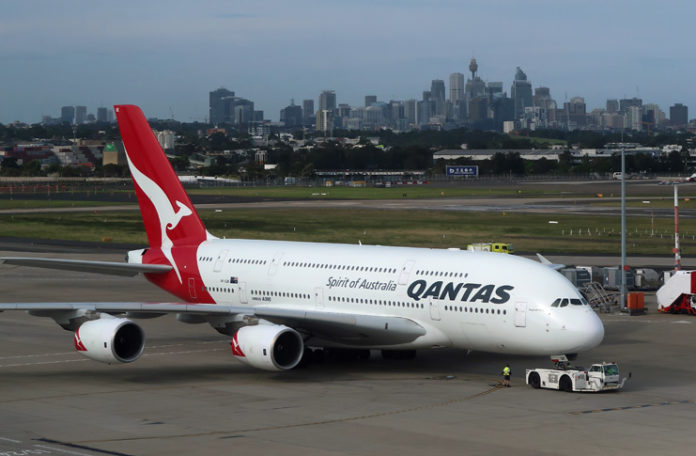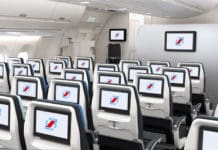
TravelingForMiles.com may receive commission from card issuers. Some or all of the card offers that appear on TravelingForMiles.com are from advertisers and may impact how and where card products appear on the site. TravelingForMiles.com does not include all card companies or all available card offers.
Some links to products and travel providers on this website will earn Traveling For Miles a commission that helps contribute to the running of the site. Traveling For Miles has partnered with CardRatings for our coverage of credit card products. Traveling For Miles and CardRatings may receive a commission from card issuers. Opinions, reviews, analyses & recommendations are the author’s alone and have not been reviewed, endorsed, or approved by any of these entities. For more details please see the disclosures found at the bottom of every page.
Qantas has unveiled the 3-year recovery plan it will be following as it navigates its way out of the current crisis, and the details shared by the airline show Qantas cutting a significant number of jobs, keeping a large proportion of its fleet grounded, retiring its 747s earlier than planned and admitting that the days may be numbered for in A380 aircraft.
The Qantas 3-Year Recovery Plan
The plan is focused on three areas:
- “Rightsizing” the workforce, fleet, and other costs according to demand projections, while retaining the ability to scale up operations as countries open up and passenger numbers increase.
- Restructuring Qantas Group will the aim of delivering ongoing cost savings and efficiencies in a market that currently looks very different to the market last year.
- Raising finance through equity to give Qantas group the liquidity it needs to see it through the current crisis.
Qantas plans to raise up to AU$1.9bn (~US$1.31bn) through shares issues and this will be made up of an underwritten placement of AU$1.4bn (~US$960m) shares and the issue of up to AU$500m (~US$345m) in shares as part of a non-underwritten share purchase plan.
From an employee standpoint, Qantas will be cutting its workforce “by at least 6,000 roles across all parts of the business” and continuing with the furlough scheme that has seen 15,000 employees standing down from their duties.
From an aircraft standpoint, Qantas has deferred the deliveries of its A321neo and 787-9 aircraft, the airline will be retiring its 6 remaining Boeing 747s with immediate effect (6 months ahead of schedule) and it will keep up to 100 of its aircraft grounded – some for up to twelve months, others for longer. Most of the grounded aircraft will be from Qantas’ international fleet as the Australian government has already indicated that its borders are likely to remain closed to most overseas visitors until next year. While the majority of Qantas’ aircraft are expected to return to service at some point in the future, the airline has confirmed that some leased aircraft may be returned as their leases fall due.
The fate of Qantas’ Airbus A380s hasn’t been specifically addressed in the airline’s recovery plan but the CEO commentary that goes alongside the recover plan included this piece of information:
“While most of the Group’s long-haul aircraft are expected to steadily return to service over time, there is significant uncertainty as to when flying levels will support its 12 Airbus A380s. These assets will be idle for the foreseeable future, which represents a significant percentage of their remaining useful life.”
The issues facing Qantas and its A380s center around the following facts:
- The aircraft is of no use to the airline while international travel to/from Australia is mostly prohibited.
- Even after Australia’s borders reopen, the travel industry will still be considerably smaller than it was before the virus struck and there’s no guarantee that people will be traveling in the kinds of numbers needed to make operating the A380 aircraft viable.
- The A380 is, ultimately, not a very efficient aircraft so Qantas may well decide that its operations will be considerably leaner if it restricts itself to using just its Airbus A330 aircraft and Boeing 787-9 Dreamliners on its long-haul routes as it rides out the storm.
The key issue is that the demand for travel is not expected to return to pre-virus levels for at least 3 years, and by that time the average Qantas A380 will be 15 years old and its inefficiencies will be highlighted even more by the newer aircraft in the airline’s fleet so it may be hard to justify returning the aircraft to service.
A number of global airlines (like Air France) have already stated that their A380s won’t be returning to the skies (at least not with their current owners) and others, like Qatar Airways, have accelerated the retirement plans for their A380s and there’s no reason to think that Qantas won’t go down the same route.
Bottom Line
Qantas is just the latest in a string of global airlines that have set out their plans to keep themselves afloat over the next few challenging years and, sadly, its plan involves job losses and deep cuts to operations. The fate of various aircraft can never be compared to the fate of workers who are about to find themselves out of a job, but it is still sad to see the era of the A380 being brought to a speedier close than was expected courtesy of Covid-19.













![Earn 20,000 bonus Amex points on Air France/KLM bookings [Targeted] a row of seats in a plane](https://travelingformiles.com/wp-content/uploads/2024/03/air-france-new-business-class-2-741-356x220.jpg)


